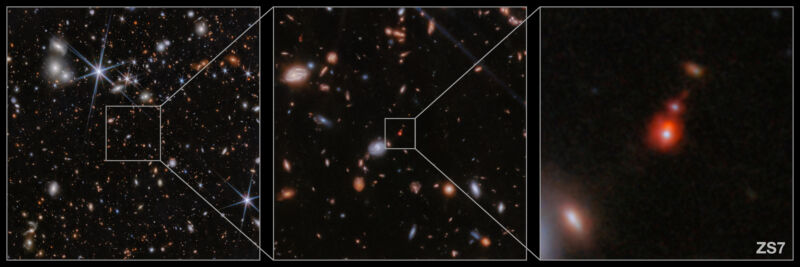
Good morning. It's May 21, and today's photo comes from the James Webb Space Telescope. It showcases the coming together of two massive black holes in the early Universe, just 740 million years after the Big Bang.
Each of the black holes has an estimated mass of roughly 50 million times the mass of our star, the Sun. The discovery of this merger so early in the Universe indicates that the growth of these objects in the centers of galaxies occurred very rapidly.
Fortunately, Webb and its Near-Infrared Spectrograph are well positioned to observe the fast-moving dense gas characteristic of black holes accreting matter. As they swallow nearby matter, black holes produce highly ionized gas.
"Our findings suggest that merging is an important route through which black holes can rapidly grow, even at cosmic dawn," said Hannah Übler of the University of Cambridge. "Together with other Webb findings of active, massive black holes in the distant Universe, our results also show that massive black holes have been shaping the evolution of galaxies from the very beginning."
Source: ESA/Webb, NASA, CSA, et. al



3175x175(CURRENT).thumb.jpg.b05acc060982b36f5891ba728e6d953c.jpg)
Recommended Comments
There are no comments to display.
Join the conversation
You can post now and register later. If you have an account, sign in now to post with your account.
Note: Your post will require moderator approval before it will be visible.